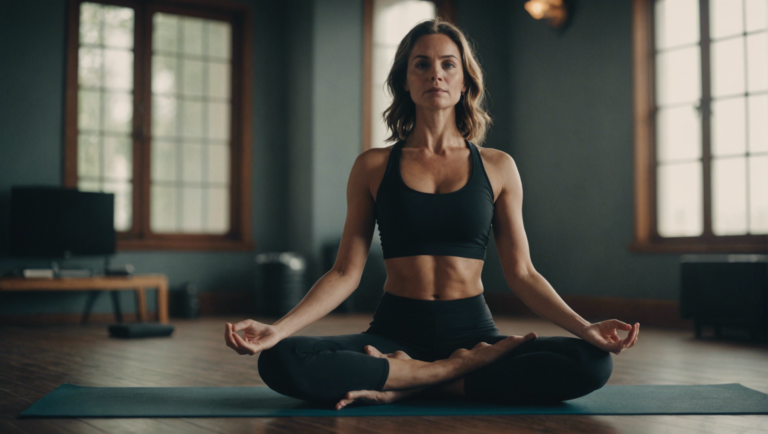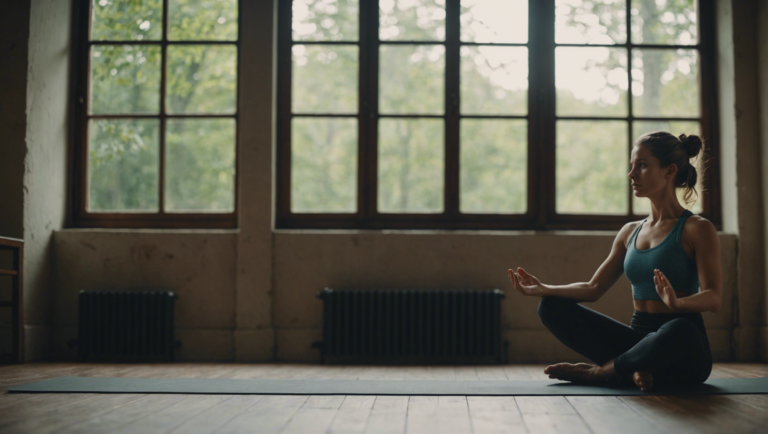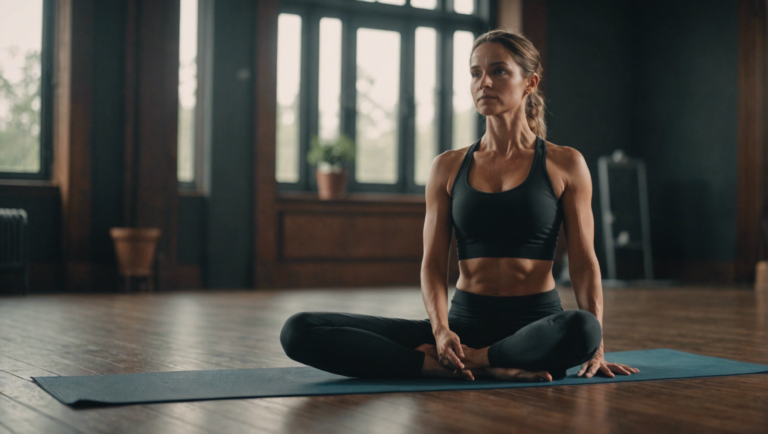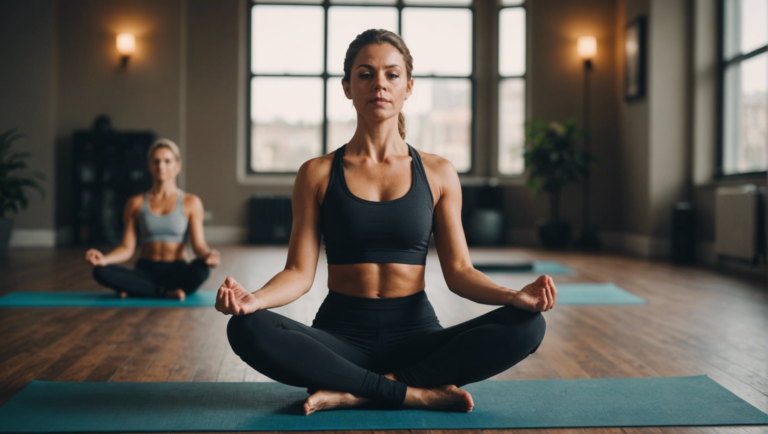Guidelines To Understanding And Practicing Yin And Yang Yoga
The Concept of Yin and Yang in Yoga Philosophy
Yin and Yang are fundamental concepts in Chinese philosophy and play a significant role in various aspects of life, including yoga. In yoga philosophy, the concept of Yin and Yang is deeply intertwined, representing complementary forces that are interconnected and interdependent. Understanding and practicing Yin and Yang yoga can offer a balanced approach to physical, mental, and spiritual well-being.
The Essence of Yin and Yang in Yoga
Yin and Yang are often described as opposite forces that are also interconnected and interdependent. In yoga, Yin represents the passive, calm, and receptive aspects, while Yang embodies the active, dynamic, and strong elements. Yin yoga focuses on holding poses for an extended period, typically three to five minutes or even longer, targeting deeper connective tissues and joints. On the other hand, Yang yoga involves more movement and muscle engagement, aiming to build strength, flexibility, and stamina.
Finding Balance Through Yin and Yang Yoga
The practice of Yin and Yang yoga aims to create balance and harmony within the body and mind. By incorporating both Yin and Yang elements into a yoga practice, practitioners can experience a holistic approach to health and well-being. Yin yoga encourages stillness, introspection, and patience, helping to release tension and improve flexibility. Yang yoga, on the other hand, cultivates energy, heat, and vitality, enhancing strength and endurance.
Benefits of Yin Yoga
Yin yoga offers a range of benefits for the body and mind. Holding poses for an extended period allows for deep stretching of connective tissues and fascia, promoting flexibility and joint health. In addition, the meditative aspect of Yin yoga can help calm the mind, reduce stress and anxiety, and improve overall mental well-being. It also complements more dynamic forms of yoga or physical activities, providing a balanced practice.
Harnessing the Power of Yang Yoga
Yang yoga, with its dynamic and energetic nature, offers a different set of benefits. By moving through poses with more strength and intensity, practitioners can build muscle, increase cardiovascular fitness, and enhance overall physical performance. The active engagement required in Yang yoga can help improve focus, discipline, and determination, both on and off the mat.
Integrating Yin and Yang Practices
To experience the full benefits of Yin and Yang yoga, practitioners can integrate both styles into their regular practice. Balancing the passive, cooling effects of Yin with the active, heating qualities of Yang can create harmony within the body and mind. By alternating between Yin and Yang practices or combining elements of both in each session, individuals can cultivate a well-rounded and sustainable yoga practice.
Embracing the Harmony of Yin and Yang
In essence, the concept of Yin and Yang in yoga philosophy emphasizes the importance of balance and harmony. By understanding and practicing Yin and Yang yoga, individuals can cultivate a holistic approach to well-being that addresses the diverse needs of the body, mind, and spirit. Whether seeking relaxation and introspection through Yin or vitality and strength through Yang, finding harmony between these complementary forces can lead to a more balanced and fulfilling yoga practice.
Contrasting Characteristics of Yin and Yang Yoga Practices
In the world of yoga, there are various practices that offer unique benefits and approaches to achieving physical and mental well-being. Two popular styles, Yin and Yang yoga, offer contrasting characteristics that cater to different needs and preferences. Understanding these differences can help practitioners choose the practice that aligns best with their goals and preferences.
Exploring Yin Yoga
Yin yoga is a slow-paced and meditative practice that targets the deep connective tissues of the body, such as ligaments, joints, bones, and the fascia. In Yin yoga, poses are typically held for an extended period, ranging from 45 seconds to five minutes or more. This extended duration helps release tension in the connective tissues and improve flexibility. The practice is often characterized by passive poses that are performed while seated or lying down.
Embracing Yang Yoga
On the other hand, Yang yoga encompasses dynamic and active styles of yoga, such as Vinyasa, Ashtanga, and Power yoga. Yang yoga focuses on building strength, stamina, and flexibility through flowing sequences of poses that are coordinated with breath. Unlike Yin yoga, which emphasizes stillness, Yang yoga keeps practitioners constantly moving, engaging muscles, and generating heat in the body.
Contrasting Characteristics
-
Intensity: Yang yoga is more intense and physically demanding compared to the gentle nature of Yin yoga. While Yang yoga builds heat and works on muscular strength, Yin yoga targets the deeper tissues without engaging the muscles intensely.
-
Duration: Yin yoga poses are held for a longer duration, allowing for deep stretching and release of tension. In contrast, Yang yoga poses are typically held for a shorter duration before transitioning to the next pose.
-
Focus: Yin yoga focuses on relaxation, mindfulness, and surrendering into each pose. It encourages practitioners to find stillness and observe sensations in the body. Yang yoga, on the other hand, emphasizes movement, breath control, and building energy and vitality.
Choosing the Right Practice
The choice between Yin and Yang yoga ultimately depends on individual preferences, physical condition, and goals. Those looking to unwind, increase flexibility, and cultivate a sense of inner peace may gravitate towards Yin yoga. In contrast, individuals seeking a more dynamic, challenging practice that enhances physical strength and cardiovascular health may prefer Yang yoga.
By understanding the unique characteristics of Yin and Yang yoga, practitioners can tailor their practice to meet their specific needs and preferences. Both styles offer valuable benefits and can complement each other in a well-rounded yoga practice. Whether you choose the stillness of Yin or the movement of Yang, incorporating both styles mindfully can lead to a balanced and harmonious yoga practice.
Benefits of Integrating Yin and Yang Yoga in a Wellness Routine
Holistic Approach to Wellness with Yin and Yang Yoga
Yin and Yang Yoga, when integrated into a wellness routine, offer a holistic approach to overall well-being. By combining these two complementary forms of yoga, practitioners can experience a balance of energies within the body, mind, and spirit. Yin Yoga focuses on passive postures that target the deep connective tissues, while Yang Yoga involves dynamic movements that build strength and flexibility. This combination helps in harmonizing the body’s energy flow, enhancing physical health, mental clarity, and emotional balance.
Stress Reduction and Relaxation
One of the key benefits of incorporating Yin and Yang Yoga into a wellness routine is stress reduction and relaxation. The slow-paced nature of Yin Yoga postures allows practitioners to release tension stored in the body’s fascia, promoting deep relaxation. On the other hand, the dynamic sequences of Yang Yoga help in reducing stress by increasing blood flow, releasing endorphins, and calming the mind. Together, these practices create a harmonious blend that aids in stress management and promotes a sense of calmness.
Improved Flexibility and Strength
Yin and Yang Yoga provide a well-rounded approach to improving flexibility and strength. Yin Yoga postures are held for an extended period, targeting the joints and connective tissues, which helps in increasing flexibility and mobility. In contrast, the active movements in Yang Yoga sequences build muscle strength, endurance, and overall physical stability. By combining these two styles, practitioners can enhance their overall range of motion, muscular strength, and bodily awareness.
Enhanced Energy Flow and Vitality
Another significant benefit of integrating Yin and Yang Yoga into a wellness routine is the enhancement of energy flow and vitality. According to traditional Chinese medicine, the concept of Yin and Yang represents the balance of opposing energies within the body. Through the practice of Yin and Yang Yoga, individuals can stimulate the flow of vital energy (Qi) along the meridian lines, promoting overall vitality, well-being, and emotional harmony. This balanced energy flow rejuvenates the body at a deeper level, fostering a sense of vitality and rejuvenation.
Mental Clarity and Emotional Balance
Yin and Yang Yoga also play a vital role in promoting mental clarity and emotional balance. The meditative aspect of Yin Yoga encourages mindfulness and introspection, helping individuals to cultivate a sense of inner peace and emotional awareness. In contrast, the dynamic nature of Yang Yoga invigorates the body and mind, promoting mental focus, clarity, and emotional resilience. By practicing both styles, individuals can achieve a harmonious balance between the calming effects of Yin Yoga and the energizing benefits of Yang Yoga, leading to improved mental well-being and emotional balance.
The integration of Yin and Yang Yoga into a wellness routine offers a myriad of benefits, including stress reduction, improved flexibility and strength, enhanced energy flow, mental clarity, and emotional balance. By embracing the harmonious blend of these two complementary practices, individuals can embark on a transformative journey towards holistic well-being and inner harmony.
Exploring Yin and Yang Poses and Sequences
Yin and Yang yoga is a practice that aims to balance the opposing forces of Yin and Yang within the body. In this style of yoga, poses and sequences are specifically designed to target these energies, creating harmony and equilibrium. By exploring Yin and Yang poses and sequences, practitioners can deepen their understanding of this ancient practice and unlock a new level of mind-body connection.
The Essence of Yin and Yang Poses
Yin poses in yoga are characterized by their passive nature, where practitioners relax into the pose for an extended period, typically three to five minutes. These poses target the connective tissues, such as ligaments, tendons, and fascia, helping to improve flexibility and joint health. Some common Yin poses include Butterfly Pose, Sphinx Pose, and Supported Child’s Pose.
On the other hand, Yang poses are more dynamic and engaging, focusing on building strength, stability, and heat in the body. These poses are typically held for a shorter duration and target the muscles rather than the connective tissues. Examples of Yang poses include Warrior Poses, Sun Salutations, and Chair Pose.
Creating a Balanced Sequence
To create a balanced Yin and Yang yoga sequence, it’s essential to incorporate both types of poses strategically. A well-rounded practice would include a mix of passive Yin poses to target the deeper tissues and dynamic Yang poses to build strength and heat in the muscles. By alternating between the two, practitioners can experience a holistic practice that addresses both physical and energetic aspects of the body.
When designing a sequence, start with a gentle warm-up to prepare the body for the practice ahead. This can include movements like Cat-Cow Stretch, Neck Rolls, and gentle twists. Follow this with a mix of Yin and Yang poses, keeping in mind the need to balance effort and ease. End the sequence with a cool down, such as Forward Fold or Savasana, to allow the body to relax and integrate the benefits of the practice.
Benefits of Yin and Yang Yoga
Practicing Yin and Yang yoga offers a wide range of benefits for the body, mind, and spirit. Yin poses help to improve flexibility, increase circulation, and reduce stress and anxiety. On the other hand, Yang poses build strength, improve stamina, and energize the body.
By combining the two in a balanced practice, practitioners can experience enhanced overall well-being, improved energy flow, and a deeper sense of harmony within themselves. Additionally, the contrast between the passive and active elements of Yin and Yang yoga can help cultivate mindfulness, presence, and a deeper connection to the breath.
Exploring Yin and Yang poses and sequences in yoga can offer a transformative experience that goes beyond the physical postures. By understanding the principles of Yin and Yang and incorporating them into your practice, you can cultivate balance, harmony, and vitality on and off the mat. Embrace the duality of these energies, and let your yoga practice be a reflection of the interconnectedness of all aspects of your being.
How to Create a Balanced Yin and Yang Yoga Practice
Creating a Balanced Yin and Yang Yoga Practice
Yin and Yang yoga are two complementary styles that can help achieve a balanced mind and body. While Yin yoga focuses on passively holding poses for an extended period to target the deep connective tissues, Yang yoga involves more dynamic movements and muscular engagement. Combining these two styles in your practice can bring harmony and equilibrium. Here are some guidelines to help you understand and practice Yin and Yang yoga effectively.
Understanding the Principles of Yin and Yang
In Chinese philosophy, Yin and Yang represent the dual nature of the universe – where Yin is passive, receptive, and cooling, while Yang is active, dynamic, and heating. When applied to yoga, Yin poses are typically done close to the ground, held for 3-5 minutes or more, targeting the joints and connective tissues. Yang poses, on the other hand, are more active and engaging, focusing on muscles and blood flow.
Balancing Yin and Yang in Your Practice
To create a balanced practice, start by assessing your needs. If you’ve had a busy, stressful day, incorporating more Yin poses can help calm the mind and release tension from the body. On days when you feel sluggish or low on energy, adding Yang poses can help invigorate you and build strength. It’s essential to listen to your body and adjust your practice accordingly.
Sequencing Yin and Yang Poses
When sequencing your yoga practice, it’s beneficial to begin with a gentle warm-up incorporating some Yang elements to prepare the body. You can then transition into deeper, longer-held Yin poses to target the connective tissues. Balancing both Yin and Yang poses throughout your practice can help avoid overworking specific areas and promote overall harmony.
Mindful Breathwork and Meditation
Integrating breathwork and meditation techniques can further enhance the benefits of your Yin and Yang yoga practice. During Yin poses, focus on deep belly breathing to help relax the body and support the release of tension. In Yang poses, synchronize your breath with movement to create a flowing and dynamic practice. Taking a few minutes at the end of your practice for meditation can also help cultivate a sense of inner peace and mindfulness.
Listening to Your Body
Above all, remember to listen to your body during your Yin and Yang yoga practice. Each day is different, and what your body needs can vary. It’s essential to honor your limitations, avoid pushing yourself too far, and make modifications as needed. By practicing with awareness and compassion for yourself, you can cultivate a truly balanced and sustainable yoga practice.
Integrating Yin and Yang elements into your yoga practice can offer a holistic approach to wellness, providing physical, mental, and emotional benefits. By understanding the principles of Yin and Yang, balancing both styles in your practice, sequencing poses mindfully, incorporating breathwork and meditation, and listening to your body, you can create a harmonious and fulfilling yoga practice that nourishes your entire being.
Conclusion
Both Yin and Yang yoga practices into your wellness routine can bring about a harmonious balance in both your physical and mental well-being. By understanding the concept of Yin and Yang in yoga philosophy, you delve deeper into the interconnectedness of opposites in the universe and within yourself. Each practice complements the other, offering a holistic approach to yoga that caters to different aspects of your being.
As you explore the contrasting characteristics of Yin and Yang yoga, you begin to appreciate the dynamic interplay between stillness and movement, softness and strength, surrender and effort. By embracing these polarities, you open yourself up to a more profound understanding of yourself and your practice. Yin yoga encourages patience, introspection, and relaxation, while Yang yoga promotes vitality, endurance, and dynamism. Together, they create a synergistic relationship that fosters balance and harmony.
Integrating Yin and Yang yoga into your routine provides a plethora of benefits that enhance your overall well-being. From improved flexibility and joint mobility to stress relief and emotional balance, these practices offer a comprehensive approach to cultivating physical, mental, and emotional health. By understanding the unique advantages of each style, you can tailor your practice to suit your individual needs and goals, ensuring a personalized and enriching experience on the mat.
Exploring Yin and Yang poses and sequences allows you to delve deeper into the essence of each practice, cultivating a profound connection to your body, breath, and mind. Yin poses such as forward folds, hip openers, and gentle twists target the deep connective tissues, promoting relaxation and restoration. In contrast, Yang poses like sun salutations, standing balances, and inversions build strength, stamina, and heat in the body, fostering vitality and energy flow.
Creating a balanced Yin and Yang yoga practice involves blending elements of both styles to create a harmonious and well-rounded sequence that caters to your unique needs. Begin by setting an intention for your practice, whether it’s cultivating stillness, finding strength, or fostering balance. Incorporate a mix of Yin and Yang poses, focusing on fluid transitions and mindful breath awareness. Embrace moments of stillness and movement, softness and strength, yin and yang, finding equilibrium in the present moment.
By embracing the duality of Yin and Yang in your yoga practice, you embark on a transformative journey of self-discovery, growth, and healing. Through the integration of these complementary practices, you cultivate a deeper connection to yourself, your practice, and the world around you. Embrace the harmony of opposites, finding balance in the interplay of Yin and Yang, and discover the profound benefits of integrating these ancient practices into your wellness routine.



